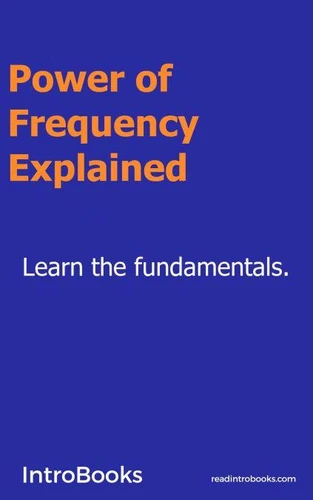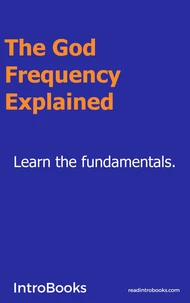Power of Frequency Explained
Par :Formats :
Disponible dans votre compte client Decitre ou Furet du Nord dès validation de votre commande. Le format ePub est :
- Compatible avec une lecture sur My Vivlio (smartphone, tablette, ordinateur)
- Compatible avec une lecture sur liseuses Vivlio
- Pour les liseuses autres que Vivlio, vous devez utiliser le logiciel Adobe Digital Edition. Non compatible avec la lecture sur les liseuses Kindle, Remarkable et Sony
 , qui est-ce ?
, qui est-ce ?Notre partenaire de plateforme de lecture numérique où vous retrouverez l'ensemble de vos ebooks gratuitement
Pour en savoir plus sur nos ebooks, consultez notre aide en ligne ici
- FormatePub
- ISBN8223453192
- EAN9798223453192
- Date de parution01/09/2023
- Protection num.pas de protection
- Infos supplémentairesepub
- ÉditeurDraft2Digital
Résumé
The frequency of a repeated event is its number of instances per unit of time. It differs from angular frequency, and it sometimes implies temporal frequency for clarification. One event occurs every second, or one hertz (Hz) when measuring frequency. The time elapsed between events is measured by the period, which is the inverse of the frequency. For instance, if the reading of a heartbeat is 120 times per minute (2 hertz), the period, T, the space between beats, is half a second, i.e., 60 seconds divided by 120 beats.
The frequency of vibratory and oscillatory phenomena, including audio signals (sound), mechanical vibrations, and light and radio waves, is an important criterion in science and engineering.
The frequency of vibratory and oscillatory phenomena, including audio signals (sound), mechanical vibrations, and light and radio waves, is an important criterion in science and engineering.
The frequency of a repeated event is its number of instances per unit of time. It differs from angular frequency, and it sometimes implies temporal frequency for clarification. One event occurs every second, or one hertz (Hz) when measuring frequency. The time elapsed between events is measured by the period, which is the inverse of the frequency. For instance, if the reading of a heartbeat is 120 times per minute (2 hertz), the period, T, the space between beats, is half a second, i.e., 60 seconds divided by 120 beats.
The frequency of vibratory and oscillatory phenomena, including audio signals (sound), mechanical vibrations, and light and radio waves, is an important criterion in science and engineering.
The frequency of vibratory and oscillatory phenomena, including audio signals (sound), mechanical vibrations, and light and radio waves, is an important criterion in science and engineering.






















